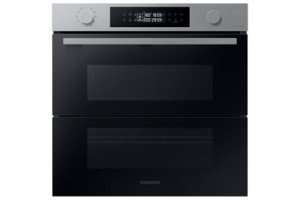17 Reasons Why You Shouldn't Ignore Built-In Cookers
The Rise of Built-In Cookers: A Comprehensive Guide
Over the last few years, built-in cookers have actually gained significant appeal among house owners and culinary enthusiasts alike. These appliances flawlessly integrate into kitchen styles, using a blend of functionality and aesthetic appeals. As development continues to progress within the kitchen appliance sector, built-in cookers have actually changed from mere benefits into necessary tools for contemporary cooking. This article explores different aspects of built-in cookers, including their types, advantages, setup considerations, and maintenance ideas.
What are Built-In Cookers?
Built-in cookers are kitchen appliances intentionally designed to be integrated into cabinets or countertops. Unlike freestanding systems that inhabit standalone space, built-in cookers enhance the kitchen's total style by providing a seamless look. They are often part of a coordinated set that may include ovens, microwaves, and stovetops.
Kinds Of Built-In Cookers
Built-in cookers can be found in numerous kinds, each catering to particular cooking styles and choices. The following table details common types of built-in cookers:
Type
Description
Advantages
Built-In Ovens
Wall-mounted or integrated ovens that save flooring area.
Save area; simple access; visual appeal.
Built-In Cooktops
Stovetop systems set up straight into the counter top.
Versatile style alternatives; available in gas, electric, or induction.
Microwaves
Built-in microwaves incorporate into kitchen cabinetry for a structured look.
Conserves countertop space; modern style.
Mix Ovens
Ovens that integrate standard and microwave cooking functions.
Flexibility; faster cooking times.
Steam Ovens
Use steam for cooking, protecting nutrients and flavors.
Much healthier cooking; suitable for veggies and fish.
Advantages of Built-In Cookers
Investing in built-in cookers provides many benefits that interest both performance and style. Below are a few of the key advantages:
1. Area Efficiency
Built-in cookers maximize readily available space, making them perfect for smaller sized cooking areas. They provide a structured appearance without jeopardizing cooking capabilities.
2. Style Integration
These appliances mix effortlessly into kitchen cabinetry, boosting the overall visual. Property owners have numerous style options, enabling them to develop a cohesive kitchen look.
3. Improved Accessibility
Built-in ovens placed at eye level remove the need to flex down to examine food, making cooking a more accessible experience for everyone, including those with mobility challenges.
4. Versatile Cooking Options
With various designs and performances, built-in cookers enable diverse cooking techniques. Home cooks can choose appliances that best match their culinary preferences.
5. Increased Home Value
Trendy built-in cookers can improve the home's general worth, especially in competitive property markets. built-in / integrated hobs and ovens prefer fully equipped cooking areas.
Installation Considerations
While built-in cookers offer many advantages, their installation needs cautious planning. Here are vital factors to consider:
- Space Measurement: Before acquiring any built-in cooker, it's crucial to determine the intended location accurately. Appliances require to fit effortlessly within existing kitchen cabinetry, leaving appropriate ventilation area.
- Electrical Power and Gas Supply: For built-in electrical cookers, guarantee that appropriate electric wiring is offered. Gas cookers require correct gas line installation.
- Professional Installation: Due to their intricacy, built-in cookers frequently need expert installation. Employing an expert ensures security and correct operation.
- Upkeep Access: Consider how the cooker will be accessed for cleansing and upkeep. Accessibility should remain a priority during setup.
- Compatibility with Other Appliances: Ensure that brand-new built-in cookers are suitable with existing kitchen appliances for a cohesive style.
Maintenance Tips for Built-In Cookers
Keeping built-in cookers in top condition enhances their performance and durability. Here are some upkeep pointers:
- Routine Cleaning: Regularly clean the oven and cooktop surfaces to avoid accumulation of grease and gunk. Utilize non-abrasive cleaners appropriate for the appliance material.
- Inspect Connections: Regularly inspect gas lines and electrical connections for security. Instantly address any indications of wear or damage.
- Change Filters: Many built-in ovens and microwaves consist of filters that need replacement. Follow the manufacturer's standards for altering these parts.
- Calibration: Over time, built-in ovens might need recalibration to guarantee precise temperature settings. Seek advice from the user handbook for standards on how to recalibrate.
- Expert Service: Schedule expert maintenance checks periodically to make sure that all components operate optimally.
Built-in cookers represent a significant improvement in kitchen style and functionality. Their seamless integration into cabinetry not just boosts the visual appeal of a kitchen however also enhances effectiveness and use. By comprehending the different kinds of built-in cookers, their benefits, and factors to consider for installation and maintenance, property owners can make educated options that raise their cooking experience.
Frequently Asked Questions (FAQs)
1. Are built-in cookers more expensive than freestanding designs?
While built-in cookers may have a greater preliminary expense, they often offer enhanced setup visual appeals and greater performance, making them a worthwhile investment for lots of house owners.
2. Can I set up a built-in cooker myself?
Though some property owners select to install built-in cookers themselves, it is often advisable to employ a professional due to the intricacies involved, especially with gas lines and electric circuitry.
3. How do I choose the ideal built-in cooker for my kitchen?
Consider your cooking routines, kitchen design, and area limitations when choosing built-in cookers. It's likewise important to evaluate the source of power and desired functionalities.
4. What is the lifespan of a built-in cooker?
With correct maintenance, built-in cookers, particularly ovens, can last numerous years— typically varying from 10 to 20 years, depending on the brand and usage.
5. Are built-in cookers energy-efficient?
Numerous modern-day built-in cookers include energy-efficient technologies, such as convection cooking and smart functions, which can help in reducing energy consumption.
Built-in cookers provide an advanced solution to modern cooking requires while boosting the kitchen's overall esthetic. As cooking trends continue to evolve, these appliances will likely stay an integral part of kitchen designs for many years to come.
